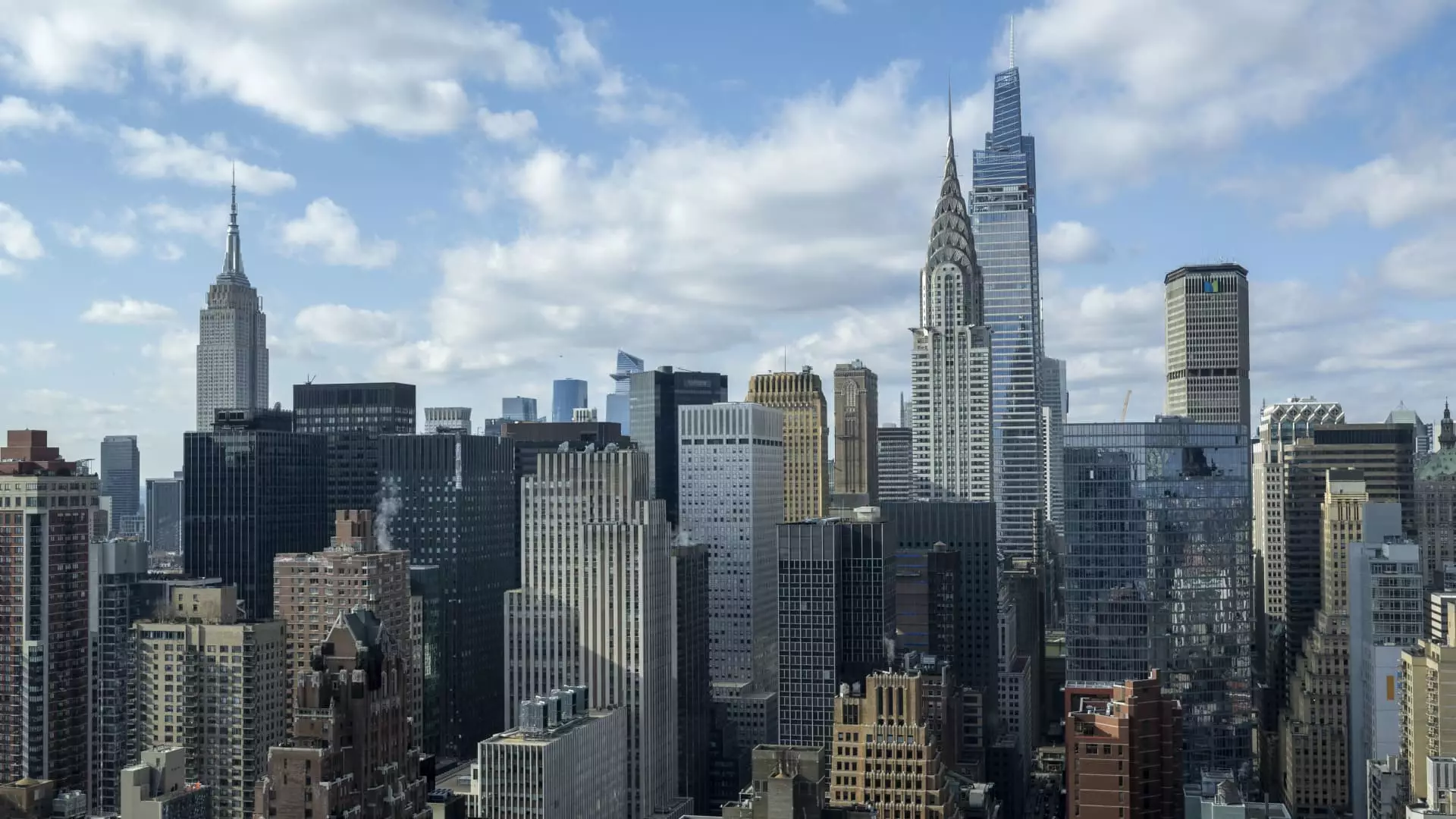As 2023 unfolds, New York City finds itself at the helm of an unprecedented turnaround in office space demand following the grips of the COVID-19 pandemic. This revitalization, characterized by a remarkable 25% spike in demand during the fourth quarter compared to the previous year, signals a pivotal moment not only for the city’s commercial real estate sector but also for the burgeoning workforce dynamics. According to VTS, which gauges demand through the assessment of new tenant engagements, this renewed interest in office spaces is emblematic of a larger cultural and economic rebirth.
Central to this resurgence is a simultaneous influx of new hires and the determined push by businesses to foster an in-person work environment. Nick Romito, CEO of VTS, highlights how unique variables within New York’s finance and technology sectors are propelling this shift. Unlike many workplaces that have fully embraced remote or hybrid models, New York’s major firms are increasingly advocating for a return to traditional office settings, identifying the need for collaboration and connection among teams as essential for growth.
Moreover, prominent players such as SL Green Realty Corp. are at the forefront of this market recovery. Although they recently reported earnings that fell short of analyst expectations, anticipation of tightening in the office market looms large. SL Green’s CEO, Marc Holliday, noted exciting forecasts from the city’s Office of Management and Budget, which anticipates the creation of approximately 38,000 office-based jobs by 2025. The implications of such job growth are profound, translating into significant demand for office space, particularly among industries that once thrived in bustling office environments.
Positive indicators abound with SL Green closing the year at a commendable 92.5% occupancy rate and projecting an increase to over 93% in the coming year. These statistics not only denote the growing interest in office leasing but also signify broader national trends; businesses are increasingly recognizing the value of physical workspace in nurturing corporate culture and collaboration. Firms are transitioning from remote work policies into structured in-office attendance, resonating with a renewed sense of stability and security.
Recent developments, such as IBM’s expansion lease of over 92,000 square feet at One Madison Avenue, cultivate further optimism. This expansion not only solidifies IBM’s commitment to New York City but also emphasizes the relevance of technological innovation and collaboration in a post-pandemic landscape. As remarked by Joanne Wright, IBM’s senior vice president, such strategic expansions reflect a vision for a vibrant working environment tailored to bring together talent from around the world.
While New York City stands out in the recovery narrative, it is not alone in its growth journey. The office markets in other cities, like San Francisco, Seattle, and Chicago, have also shown promising recovery signs—though New York leads the charge. San Francisco, rebounding at a remarkable 32% rate, showcases its own unique conditions to support this growth, emerging from a particularly turbulent period during the pandemic. In addition, Seattle and Chicago have realized growth rates of around 15% as these regions increasingly adapt hybrid work models reinforcing the need for in-person collaboration.
Despite varying recovery speeds across the United States, Ryan Masiello, chief strategy officer at VTS, encapsulates the overarching sentiment that businesses are committing to office space investments even amidst economic uncertainty. The fourth quarter’s national demand climbed by 12%, defying traditional seasonal trends and signalling robust long-term planning—a noteworthy shift reflective of growing confidence among employers.
As the office landscape in New York City blossoms anew, the confluence of rising employee presence, robust job forecasts, and strategic expansions by major firms creates a fertile ground for sustained growth. This revitalization is more than a mere recovery—it reflects a collective recognition of the vital role that physical workspaces play in fostering innovation and collaboration. As New York continues to set the pace in the office recovery narrative, it paints a compelling picture for the future of work in urban hubs across the nation. The city’s journey is far from over, and its relevance in the global business arena remains firmly intact.

